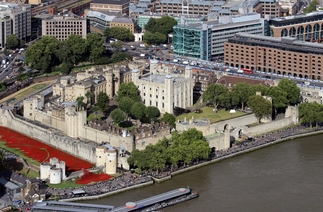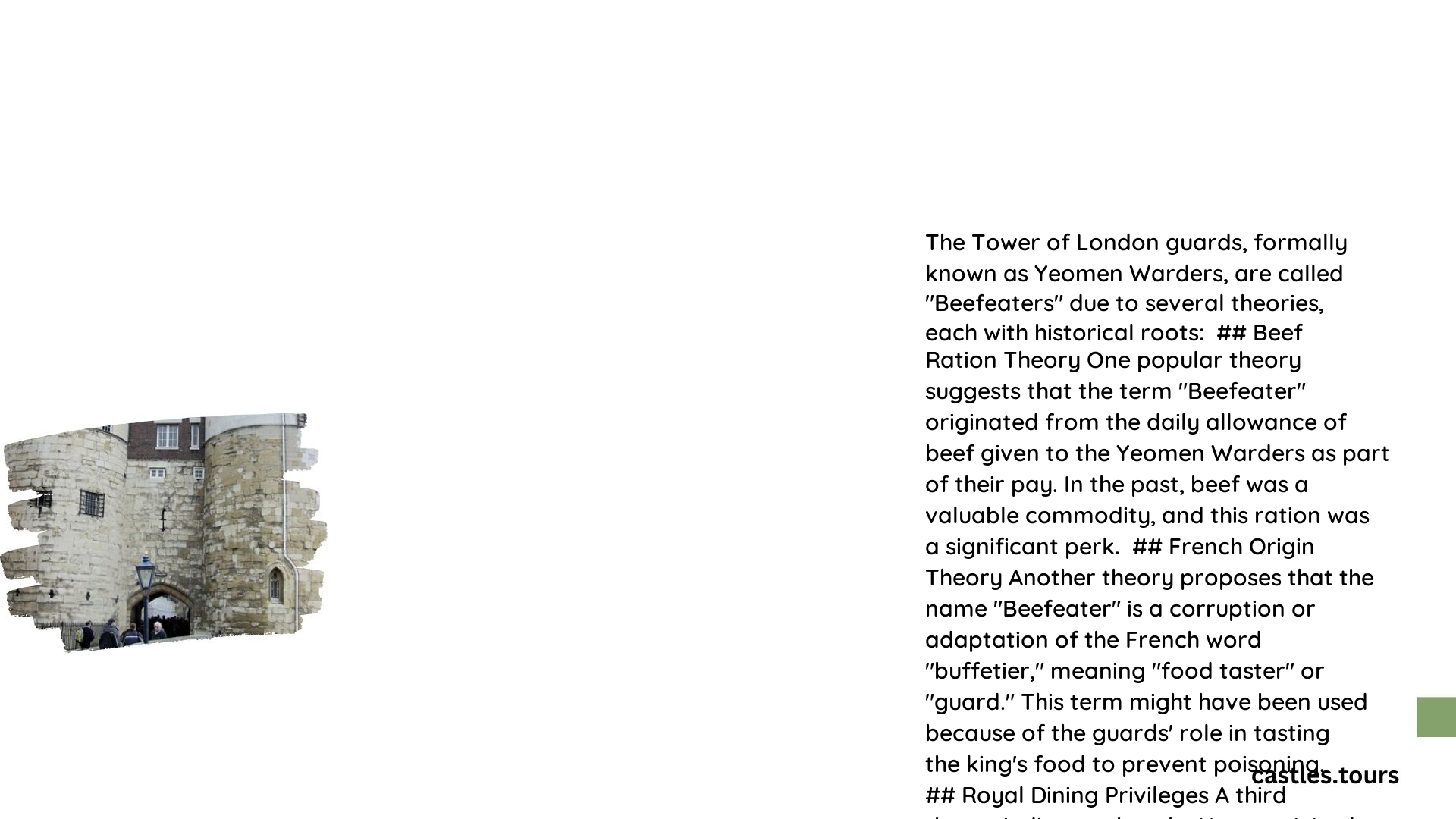The Tower of London guards, officially known as Yeomen Warders, are famously nicknamed “Beefeaters.” This moniker’s origin is steeped in history and tradition, dating back to the 15th century. The most widely accepted theory suggests it stems from their privileged position of receiving daily rations of beef, a luxury in medieval times. This article explores the fascinating history, roles, and traditions of these iconic guards.
What Is the Origin of the Term “Beefeater”?

The term “Beefeater” has been a subject of historical debate, with several theories proposed:
-
Daily Beef Ration: The most popular explanation is that Yeomen Warders received a daily allowance of beef as part of their pay. In medieval England, beef was a luxury, making this a significant perk.
-
French Connection: Some have suggested it’s derived from the French word “buffetier,” meaning a waiter or servant at a sideboard. However, linguists have largely discredited this theory.
-
Historical Context: The nickname emerged during a time when the Tower of London served multiple functions – royal palace, prison, treasury, and symbol of monarchical power.
How Did the Yeomen Warders Come to Be?

The history of the Yeomen Warders is deeply intertwined with the Tower of London:
- Establishment: Henry VII created the Yeomen Warders in 1485 to guard the Tower.
- Selection Criteria: They were chosen from the most distinguished and loyal soldiers, often veterans of the Wars of the Roses.
- Evolution of Duties: Initially tasked with guarding prisoners and the Crown Jewels, their role has evolved over centuries.
What Are the Current Roles of Beefeaters?
Today, Beefeaters serve multiple functions:
- Ceremonial Guards
- Tour Guides
- Symbolic Representatives of the Tower
Their specific duties include:
- Participating in ceremonial events like the Ceremony of the Keys
- Conducting guided tours for visitors
- Maintaining traditions and the daily life of the Tower community
What Unique Traditions Do Beefeaters Uphold?
Beefeaters maintain several intriguing traditions:
- Ceremony of the Keys: A nightly locking ritual performed for over 700 years.
- Ravenmaster: A special role responsible for caring for the Tower’s ravens.
- Toast Ceremony: New recruits are welcomed with a unique toast.
How Has the Role of Beefeaters Changed Over Time?
The role of Beefeaters has undergone significant changes:
| Era | Primary Roles |
|---|---|
| 15th-19th Century | Guarding prisoners, protecting Crown Jewels |
| 20th Century | Transitioning to ceremonial and tourism roles |
| 21st Century | Primarily ceremonial, tour guiding, and maintaining traditions |
What Are the Requirements to Become a Beefeater?
Becoming a Beefeater is a prestigious honor with strict requirements:
- Minimum 22 years of military service
- Achieved the rank of Warrant Officer or above
- Holder of Long Service and Good Conduct medal
- Character references from senior military officers
How Do Beefeaters Contribute to Tourism at the Tower of London?
Beefeaters play a crucial role in the Tower’s tourism:
- Guided Tours: They provide informative and entertaining tours of the Tower.
- Living History: Their presence and uniforms offer visitors a tangible link to history.
- Photo Opportunities: Many tourists seek photos with these iconic figures.
What Is the Significance of the Beefeater Uniform?
The Beefeater uniform is rich in symbolism:
- Design: Based on Tudor-style clothing from the 1500s
- Colors: Red and gold represent the royal colors
- Embroidery: Features symbols like the crown and ‘ER’ (Elizabeth Regina)
- Significance: Instantly recognizable worldwide as a symbol of British heritage
How Does the Beefeater Role Reflect British History and Culture?
Beefeaters embody several aspects of British history and culture:
- Military tradition and honor
- Preservation of historical sites and practices
- Blend of ceremonial duties with modern tourism
- Symbol of continuity in British institutions
Their enduring presence at the Tower of London serves as a living link between the past and present, offering visitors a unique glimpse into centuries of British history and tradition.
References:
– https://greatbritishmag.co.uk/uk-culture/what-is-a-british-beefeater/
– https://www.getours.com/expert-travel-advice/history-traditions-celebrations/yeoman-warders-beefeaters-of-the-tower-of-london
– https://www.bbc.com/travel/article/20151023-the-secret-life-of-beefeaters
